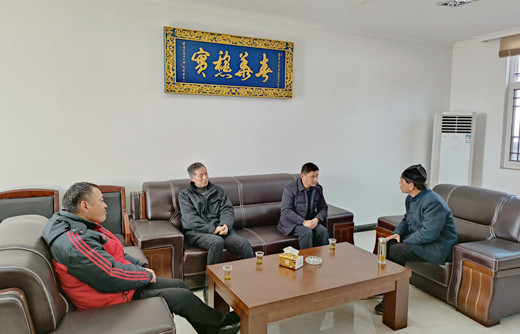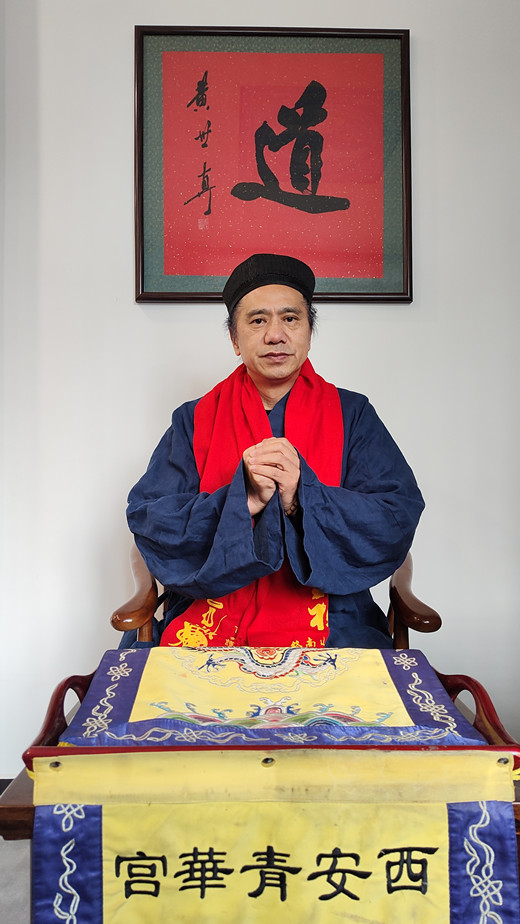江南娱乐在线登录账号 与古希腊哲学(英文)Taoism and Classical Greek philosophy(2)
黄信阳博客Henrik Klindt-Jensen
2010-12-31
In the poem of the historical Parmenides, Peri physeôs, On nature, and also in Plato’s dialogue named Parmenides, we find Hodos, Way: we must choose the right way to the truth, conceived as ‘oneness’: in the poem, the young man is brought to the Goddess of Righteousness, stands in the gate of being, of light[x], telling that being and thinking is the same in going the right way[xi]. On the other hand, the concept of Tao would also include this concept of Truth. In Parmenides’ poem we have an exclusion of being and nothing. In Taoism, there is not much thinking in exclusion or in wrong way. Being is linked with non-being, as it is also the case later by Plato.
The Tao-way is developed for one while going it, harmonizing oneself, and in doing it one realize that the way was always there, so really you have “done nothing”. In Plato’s dialogue The Sophist, the historical Parmenides is quoted for his assertion of being as exclusion of non-being[xii]: the Sophist belongs to this non-being, while the Philosopher belongs to the being. But on the other hand, it is just this non-being, stated and incarnated by the Sophist that clarifies the being, stated and incarnated by the Philosopher. The Sophist, situated in none-being, is somehow necessary in order to determine the Philosopher, situated in being. And here the true being-way of the Philosopher somehow includes the false non-being way of the Sophist. In opposition to the historical Parmenides, Plato then is forced to mix being with non-being. So here we find a more inclusive view of opposites, more close to Taoism.
Another Greek “translation” of Tao could be Logos, which on the other hand is difficult to translate into English. Literary meaning word, Logos is broader to be understood as order, meaning somehow in opposition to chaos, but in another sense in opposition to mythos, ‘the myth’; in Tao Te Ching, it is stated, that
“The Tao produced the One./ The One produced the Two./ The Two produced the Three. The Three produced All Things./ All things carry Yin and hold to Yang. Their blended Influence brings Harmony.”[xiii]
Heraclites expresses:
“Of the Logos which is as I describe it men always prove to be uncomprehending, both before they have heard it and after they have heard it…..”[xiv]
“Therefore it is necessary to follow the common; but although the Logos is common, the many live as though they had a private understanding (phronêsis).”[xv]
“Listen not to me but to the Logos: it is wise (sophos) to agree that All things are One.”[xvi]
Here we see the Tao and respectively the Logos as the principle, the precondition for both unity and separation between all things. Often, the sentence “All things are One” is ascribed to the historical philosopher Parmenides; his own words, however, concern being, to einai: a consequence of this would be that since we must take being as comprehending the varicosity of the world, all things are in a sense One.
In Plato’s dialogue Parmenides, we find a “Parmenides” character, taking his starting point from the One; in the Neo-Platonic tradition it further conceived as the explanation of everything; in Plato’s dialogue The Sophist, the staring point is the historical philosopher Parmenides and his own claims of being. But it is quite interesting, that the very sentence “all is One” is lacking by the historical Parmenides, but is found here by Heraclites. It is interesting, that the unity is not grounded by itself, but by something else: the Logos. Here, we se the strict parallel to Taoism, as we have seen expressed in Tao The Ching: it is the Tao, that constitutes the Unity[xvii].
“Things taken together are whole and not whole, something which is Being brought together an brought apart, which is in tune and out of tune; out of all things there comes a unity, and out of unity all things.”[xviii]
Both Taoism and Heraclites thus must be regarded in terms of monism, but surely the Unity is further conceived as a duality before becoming “all things”. In Tao Te Ching, it is the two, further: the Yin and Yang[xix], by Heraclites it is pairs of opposition in union:
“The path up and the path down are one and the same.”[xx]
“God is day night, winter summer, war peace, satiety hunger; he undergoes alteration in the way that fire, which is mixed by spices, is named according to the scent (hêdonê) of them.”[xxi]
Attempts have been made in order to read Logos just as meaning ‘word’, so that an interpretation in the direction of philosophy of language can be made. Heraclites himself speaks very metaphysically all over. Taoism is conceived to be non-metaphysical; but in Tao Te Ching we find the Tao presented in a way, where it is not completely un-metaphysical:
“…The Tao is hidden and nameless/ yet it is the Tao that skillfully supports and completes.” [xxii]
Also Heraclites’ Logos is essential leading and hidden; only the few have got this insight. In the same sense, the Tao Te Ching must be read in the way, that a Tao is not hidden for the few – otherwise it had never been discovered. We, who read and understand Tao Te Ching and Heracleitus, are now (supposed to be) initiated into this; even if the many hear about Logos, they would be without precondition for the understanding of it:
“Of the Logos which is as I describe it men always prove to be uncomprehending, both before they have heard it and when once they have heard it. For although all things happens according to this Logos, men are like people of no experience, even when they experience such words and deeds as I explain, when I distinguish each thing according to its constitution and declare how it is; but the rest of men fail to notice what they do after they wake up just as they forget what they do when asleep.”[xxiii]
We thus find a theme of opening what was hidden; this theme is shared with mysticism; but Tao and Logos is to be understood in a rational way, too. By Heraclites, we find Logos as corresponding to Tao. By the historical Parmenides, we find the true way of being as corresponding to Tao. In his poem On nature, Peri physeôs, Parmenides presents a man – perhaps Parmenides himself - telling us that in his youth he met Dikê, the goddess of Justice: he met her in the gates of the ways of night and day, which she controls[xxiv]; he was lead to the way of being and had to forsake the way of not-being – ‘to be’ is the same as ‘to think’, this is the true way. So here again we have this theme of opening what was closed; truth is “unhiddingness” (as formulated by Heidegger: “Un-Verborgenheit”). The theme of Tao then is related to the Logos in the pre-Socratic philosophy.

- 《易经》艮卦为什么不谈“手”
- 富有地方文化特色的苏州玄妙观江南娱乐在线登录账号 音乐
- 中国茶道中的道家理念
- 神玉、礼玉与民玉,你是否了解手中玉器的真正
- 江南娱乐在线登录账号 文化:江南娱乐在线登录账号 时日禁忌研究(试读版)
猜你喜欢

 |
|










 京公网安备 11010202006208号
京公网安备 11010202006208号